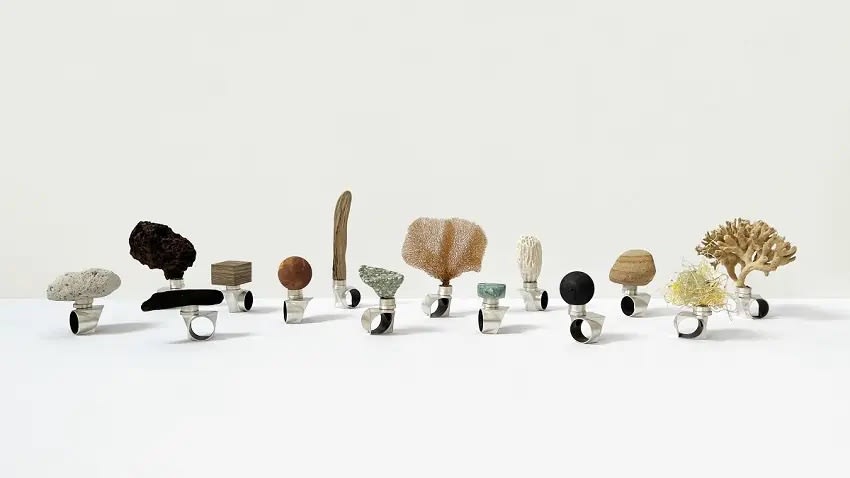The Waterhouse Natural Science Art Prize exhibition will run from 4 June until 7 August at the South Australian Museum.
The winners of the Waterhouse Natural Science Art Prize, Australia's premier biennial natural science art prize, have been announced ahead of the finalists' exhibition at the South Australian Museum, which opens tomorrow, Saturday 4 June.
South Australian artists Kyoko Hashimoto and Guy Keulemans have taken home the Open Category Prize for their work Bioregional Rings (Central Coast), a showcase of natural materials foraged from within a single bioregion.
Having received almost 500 entries from across Australia and overseas, and with 71 artists shortlisted, the prize is celebrating its 20th year with gusto. It commemorates the birth of the South Australian Museum's first curator, Frederick George Waterhouse, and gives artists the opportunity to investigate the world around them. Entrants are challenged to create artwork (excluding photography) that encapsulates their perspectives on any science that investigates the natural world, including, but not limited to, natural history, biology, geology, astronomy, chemistry, physics, medicine, biochemistry and molecular biology. "It's been fantastic to see an increase of entries into the competition, including so many incredible pieces that depict critical issues in our environment," says Brian Oldman, South Australian Museum director and one of the prize's judges. "I hope viewers of the exhibition leave feeling both artistically enriched and scientifically informed."
Kyoko Hashimoto and Guy Keulemans -Bioregional Rings (Central Coast)

Hashimoto and Keulemans' stunning sculptural ensemble is constructed from a wide range of natural and found materials from a tightly defined bioregion. "These materials derive from geology formed millions of years ago through to wood, natural sponges and marine plastic washed up on the shore," the judges commented. "Their work allows this diversity of media to artistically speak for itself whilst illustrating the range of forms to be found in the contemporary world."
The pair took their work outdoors to forage for rocks, and plant and animal remains from beaches, abandoned coal mines and other locations on the Central Coast. "The COVID lockdowns really helped this process as we had more time to comb the beaches of the Central Coast," they say. "Some of these pieces were formed into specific shapes, while others were kept natural to show off their incredible vibrancy."
The pair had challenged themselves to design and make materials from one location, instead of sourcing from around the world, after deciding that designers should work to be more sustainable by shortening global supply chains.
"While the interconnection of global economies allows many favourable conditions for makers, it's also easy to knowingly or unknowingly contribute to the destruction of the natural environment," they say. "We want designers, artists and industry to think about their supply chains, and the potential of the natural world that is local and close by to provide materials of production."
Hashimoto and Keulemans will take home a $30,000 cash prize.
__________
The Waterhouse Natural Science Art Prize exhibition will run from 4 June until 7 August at the South Australian Museum. Visitors to the exhibition can vote on The People's Choice Dr Wendy Wickes Memoriam Prize, awarded to the finalist artist judged by visitors to have communicated the most significant scientific message within the spirit of the competition. The winners and highly commended works will then tour to the National Archives of Australia in Canberra.


